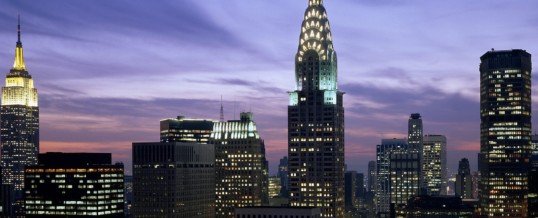
Real estate in gateway cities has always sold at a premium, but in the last decade, the gap between top-tier cities and the rest of the world has widened considerably.
In London, the average price per square foot for luxury apartments has more than doubled since 2006. And in New York, prices are up by more than 50 percent in that same time, according to data from the company Knight Frank.
On the flip side, the S&P/Case-Shiller Index, which measures home prices across the United States, is slightly below its 2006 level, while its U.K. equivalent has just barely risen.
As the gap has widened between these top global cities and the rest of the world, the competition between them has also grown fiercer.
While it may seem counterintuitive, there is a growing interest worldwide in urban luxury real estate since the 2008 financial crash, which was closely linked to global real estate.
Analysts explain this by pointing to an intensified lack of trust in securities and other financial instruments.
While real estate-based securities clearly played a big role in the 2008 financial meltdown, real estate in top international cities generally did not suffer as much as it did outside those cities. That earned these urban centers reputations as stable places to invest.
Major cities have drawn a disproportionate share of investment because their real estate is more accessible and liquid — meaning it can easily be bought and sold.
Compared to cities the luxury segment of cities like London or Hong Kong, Manhattan real estate is still a relative bargain.
Hong Kong’s luxury market is the most expensive among the world’s major urban centers, with apartments selling for an average of $4,682 per square foot, closely followed by London at $4,480 per square foot, according to Knight Frank. Compared to that, New York’s average of $2,586 per square foot seems almost cheap.
But in terms of gross yields — the annual returns investors would make if they bought a luxury apartment and rented it out (not factoring in taxes and maintenance costs) — NYC offers more for an investor.
At 5.2 percent, New York’s luxury yield is second to Tokyo’s 6.3 percent, according to Savills. By comparison, London’s yield is 3.8 percent, Singapore’s is 3 percent and Hong Kong’s 1.8 percent.
For many investors, New York’s high rents help justify its high prices.
However, notwithstanding the recent slowdown, the economic rise of China could shift the global center of wealth from Europe and the Middle East to the Pacific. That would work to New York’s benefit.
Chinese buyers are already among the most prominent investors in New York luxury real estate. Some experts expect New York to overtake London as the most attractive destination for luxury apartment buyers by 2025, in part because of the strength of the U.S. economy. London at the moment is slightly held back by the European economy.
OCT
2015

